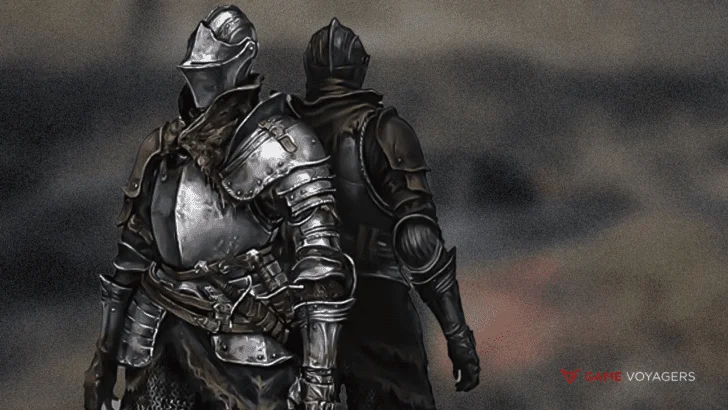Dark Souls 3 is the fourth installment of the Souls series and the final part of the Dark Souls trilogy. It is an action game that is played from a third-person perspective. It starts quickly and smoothly compared to the first two parts of the Dark Souls trilogy. The difficulty of the game increases quite fast as well. The linear world opens into a twisting, confusing, and challenging maze.
Where should you go? What should you do? What kind of weapons should you have? These are only a few questions that will come to your mind while trying to progress ahead. This game will test your skills and determination and is very punishing. But a few things might make your journey a bit more reasonable.
The way you build your character will strongly impact your overall performance on Dark Souls 3. A Knight build is a way to go for a definite progression through the game and primarily through the game’s most challenging areas.
The Knight Build
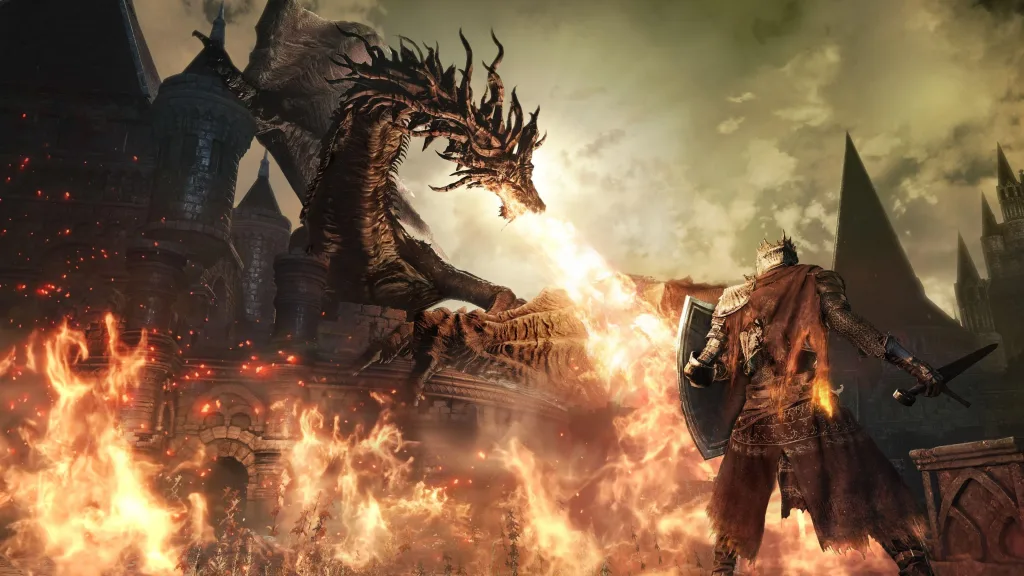
You can begin by selecting the ‘Knight’ as your beginning class. It will start you off with a good balance of melee-oriented stats. The other Magic-focused classes are not advantageous for the game’s progression due to less intelligence and faith scaling.
The other melee starting classes do not suffer as much as they begin with a little less than the preferable equipment needed. The Knight classes do not suffer from these shortcomings that might be frustrating later in the game.
The starting stats of the Knight class provides you with a higher health pool and damage reduction that will help you in combat and prevent you from getting one-hit knocked out by large enemies or special attacks.
Your low capacity for intelligence, faith, and luck will benefit you as it will ensure no points are wasted in magic-oriented gameplay and items unless you decide to do it yourself.
The Knight class is designed to be highly adaptable to various situations and how to handle them. The shield will allow you to block strong attacks from enemies while taking time to understand their fighting patterns. It will also stop arrows shot your way.
The Knight can also roll around despite having a large armor and shield. Its weight is medium to heavy, allowing him to roll around easily. This ability proves to be helpful and necessary for boss battles. Make sure you swap your long sword to two-handed when not blocking blows from the enemy. This will allow you to deliver the most damage output possible.
Starting Equipment
Selecting the Knight class will start you off with a Long sword. It is a weapon with preferable attack animations and can be upgraded later to deal severe damage. It can be transitioned between being held in one hand or two hands.
This weapon is fantastic in the long run and will greatly help during the early parts of the game until you find better, more potent weaponry. In short, do not bother to upgrade this weapon.
Besides the Long sword, the Knight also comes with a Knight Shield with 100% damage reduction when used to block attacks and a considerable amount of weight. It is considered one of the best shields in the entire game. The other starting classes must wait over six hours to get something as useful and competitive as this.
The Knight class also provides you with Knight Armor, considered one of the best armor sets in the game. It is based on a balance between physical defense, medium-weight requirements, and magic reduction. This complete set alone will last you over fifteen hours in the game and has no competition in the weight range.
Stat Priority
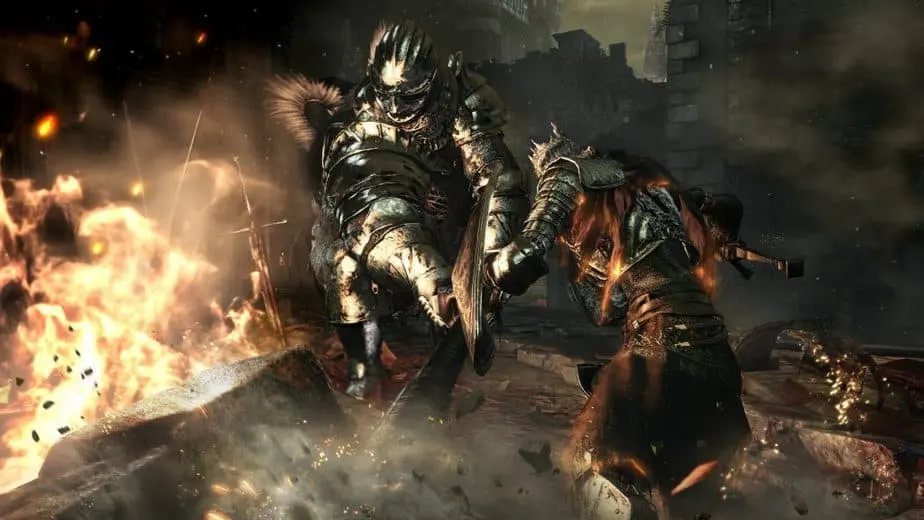
Spending your stats wisely is very important throughout the game. Here are the best stats to place your hard-earned points into:
Vigor and Strength
Prioritizing vigor and strength is a smart move. Vigor will give you a large health pool to help you survive in bad scenarios. Strength will be your damage attribute, greatly boosting the damage you deal.
Endurance
Placing points in endurance is what you want to do as it will increase stamina, and you will surely need a lot of stamina. You will often find yourself out of stamina when rolling, blocking, and doing combos.
Placing more points in endurance will help you reduce stress by increasing your stamina pool. You need to aim for 18 to 20 minimum points in endurance at the very early stages of the game.
Vitality
Vitality is an important stat in the game. Placing points into the vitality stat will enable you to carry heavy-weight armor and weapons.
The most powerful and damage-dealing weapons in the game are heavy, and the heaviness might hinder your rolling ability, especially if you hit 70% encumbrance. Increasing vitality will reduce this effect and help to keep your agility.
Dexterity
Placing points in dexterity is totally up to you if you like dexterity or quality-based weaponry. Strength is a good choice as it acts as your primary damage stat, and you will have enough damage with any weapon. But as everyone has their weapon taste, you can focus your damage points on dexterity if you want to carry dexterity-based weapons.
Another option could be finding a balance between the two stats if you want to go on with a quality build. You can also use a gem to make a weapon with different stat bonuses, but its stat requirements to wield around will not change.
Faith
You can consider placing points in faith to support melee with clerical powers. Although magic is not practical unless you decide to put points into a stat, faith can be a handy secondary stat if you like to use holy power in the game.
Stat Allocation
Spending your stats depends purely on what weapon you want to use. You can prefer weapons of strength (like the butcher’s knife) or a quality weapon that incorporates dexterity and strength equally in its base bonus (like the Sellsword Twinbaldes).
Most of the weapons can have customized stat bonuses, and in a lot of cases, what matters is adding enough of a tertiary stat so that you can use a weapon and then boosting stats into the primary bonus stat (strength). Let us assume that you want to go for a strong build.
Remember that it is your choice how many points you want to place in dexterity and strength depending on what weapon and type of bonuses you are going for.
- Level: 30
- Vigor: 18
- Attunement: 10
- Endurance: 17
- Vitality: 15
- Strength: 22 (Optional)
- Dexterity: 12 (Optional)
- Intelligence: 9
- Faith: 9
- Luck: 7
Continue to go for the following stats by soul level 50 if you are following a strength build.
- Level: 50
- Vigor: 26
- Attunement: 10
- Endurance: 20
- Vitality: 16
- Strength: 30 (Optional)
- Dexterity: 12 (Optional)
- Intelligence: 9
- Faith: 9
- Luck: 7
Your priority right now to place points in is vigor. As soon as your vigor reaches around 35 to 40, it would help to consider putting more points in the Vitality stat as you will need it to carry heavier weaponry and armor.
You will also require upgrading your Estus Flask because if you have a large pool of health, it is only effective if it can heal you up to total health fast enough without using it multiple times.
How you balance Vigor, Vitality, and Endurance depends on how many Estus Flask upgrades you have gotten from mid to late. Heavy armor used to be quite effective in the last two parts of Dark Souls, but they do not prove to be as effective, but they do provide sound damage reduction.
Weapon Choices

A lot of strength-oriented weapons are great axes and great swords. They are generally slow to attack and heavy.
The Knight’s Long sword is perfect and effective, especially early in the game. It is pretty reliable and has fast attack patterns. The only drawback is that the weapons with higher potential damage become outclassed quickly.
You should pick up the Broadsword as soon as you reach the High Wall of Lothric. It has capabilities identical to the Long sword, but the only difference is the more significant damage to Broadsword.
From now on, you can upgrade the Broadsword and add properties of your choice. You can also transition it to the Irithyll Straight Sword when you reach the later part of Undead Settlement.
This weapon has similar attack patterns to the Long sword and the Broadsword. Still, it has a natural Frostbite property that allows it to reduce the stamina of enemies significantly.
This weapon proves reasonably practical and very useful against many final bosses of the game, and it alone will last you the entire game, especially if you like the quick attacks of straight swords. It is very powerful, considering how fast its attacks are.
It requires Twinkling Titanite to upgrade it, which can be a bit frustrating to collect as it is a rare item, and it cannot get the perks of bonus damage from things like Gold Pine Resin.
If you like heavier-hitting weapons, you would like to pick up the Claymore found at the fire-breathing dragon in the High Wall of Lothric. This lightweight greatsword can be used in any transition you want, both in a one-handed or two-handed battle.
Heavier weapons are more challenging due to their long animations, but many players prefer the two-handed gameplay style.
It would help if you also considered the Uchigatana, a parry-style weapon that is also the game’s popular choice. The Butcher’s Knife is a great solid choice that can heal you as you battle and kill your enemies.
The Depp Battle Axe is very effective and suitable for most games for people who like axes. Astor’s Spear is also an excellent choice for people who want a spear weapon.
As you continue to place points in the Vitality stat near the end of the game, you can decide to transition into an ultra greatsword like the Zweihander or a big hammer.
If you prefer a dexterity-based weapon, you can continue to focus points on the dexterity stat instead of the strength stat. Or you can alter a dexterity-based weapon by infusing it with a gem to change its bonuses.
Armor Choices
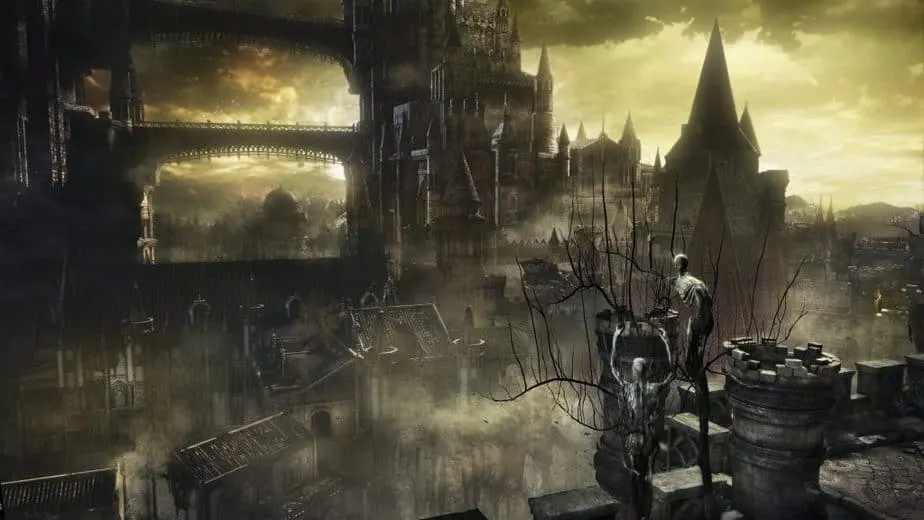
You may find it quite surprising that the starting armor for the Knight may last you for the entire game. Knight armor outshines most of the sets in terms of damage reduction, and basically, anything with higher defense needs a lot more weight (Vitality).
The Knight’s Shield has 100% damage reduction on the block and a significant amount of stats that allow you to carry it throughout the game without much competition.
Knight Armor is very powerful, but as you progress in the game, you may realize that the average damage reduction on the armor might reduce your performance in the game.
Or sometimes, you might want something with a new look. If you are thinking about having heavier armor, you will want to trade in a Soul of a Stray Dragon (an item obtained from a mini-boss inside the Farron Keep). You might also need to increase a few more points in the Vitality stat.
An upgrade you will find is the Lothric Knight Set. This will drop off Lothric Knights. Each piece has a slight drop rate, so you will want to use a rusted coin to increase item discovery when farming the set. This set has better physical damage reduction, poise, and tolerance for magic than a regular Knight set.
Once you are halfway through the game, you can farm the Silver Knight Set from Silver Knights. This gear is an upgrade from the Lothric Knight Set as it generally has less weight and better capabilities. You can also consider farming the Cathedral Knight Set or the Gundyr’s Set when you are mid to late game. You can also purchase the Exil Armor Set.
All three of these armors have high weight requirements so having increased vitality is a priority to wear these armors and use your rolling ability. Finally, Havel’s Set armor is weighty and protective and a grand prize for the players with high points in vitality.
Shield
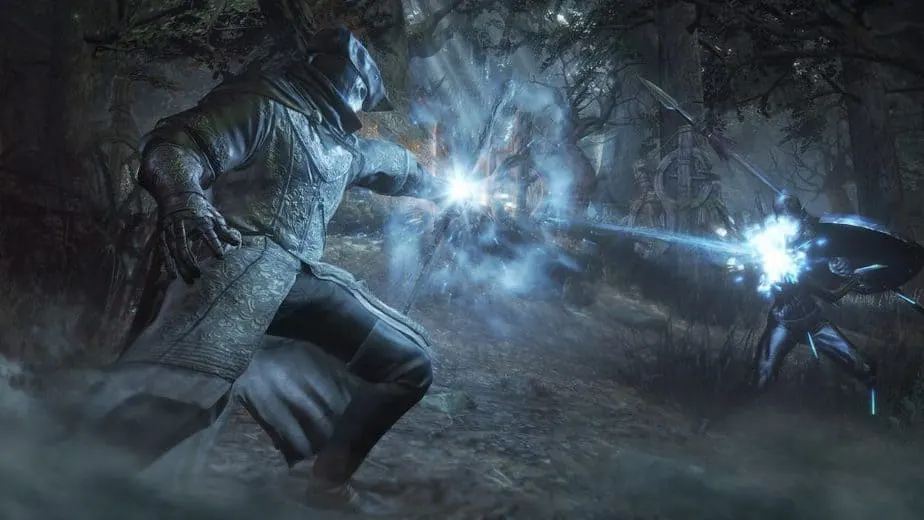
The shield is also one of the critical factors in the game for the Knight class. The first upgrade for your shield is not earned until the game’s last hours, and that also has similar attributes. Golden Wing Crest Shield is the name of the upgraded shield you might acquire, even though the starter shield lasts you for the entirety of the game.
But if you are a big fan of making your shield a big part of your build, then you can consider looking at the list of great shields in the game, a few of which will let you perform weapon skills when equipped.
Magic
Magic stat in Dark Souls 3 isn’t entirely useful for lower levels. Many players have realized that you must place almost 45 to 50 points into Intelligence or Faith to make your powers useful for progression.
Due to this, the strength Knight build does not go well with the magic build, as it will require too many points to become reliable. It is up to you to place your points while keeping this in mind.
Conclusion
The suggested builds are for players looking for a simple but effective build to play the game with. It might not be for everyone, but if you start the game and seek direction, this guide is for you.
For experienced players, this guide leaves room for dexterity or quality they prefer or want to include faith-based abilities into their builds. In short, this guide will give the players a more pleasant experience with the game when they go in prepared and have a sense of what they want and how to do it.

